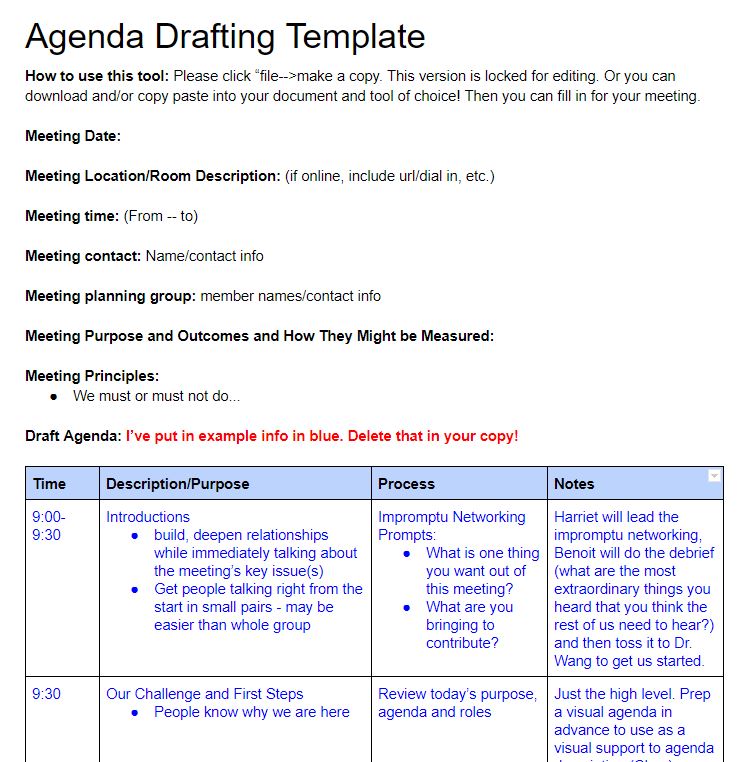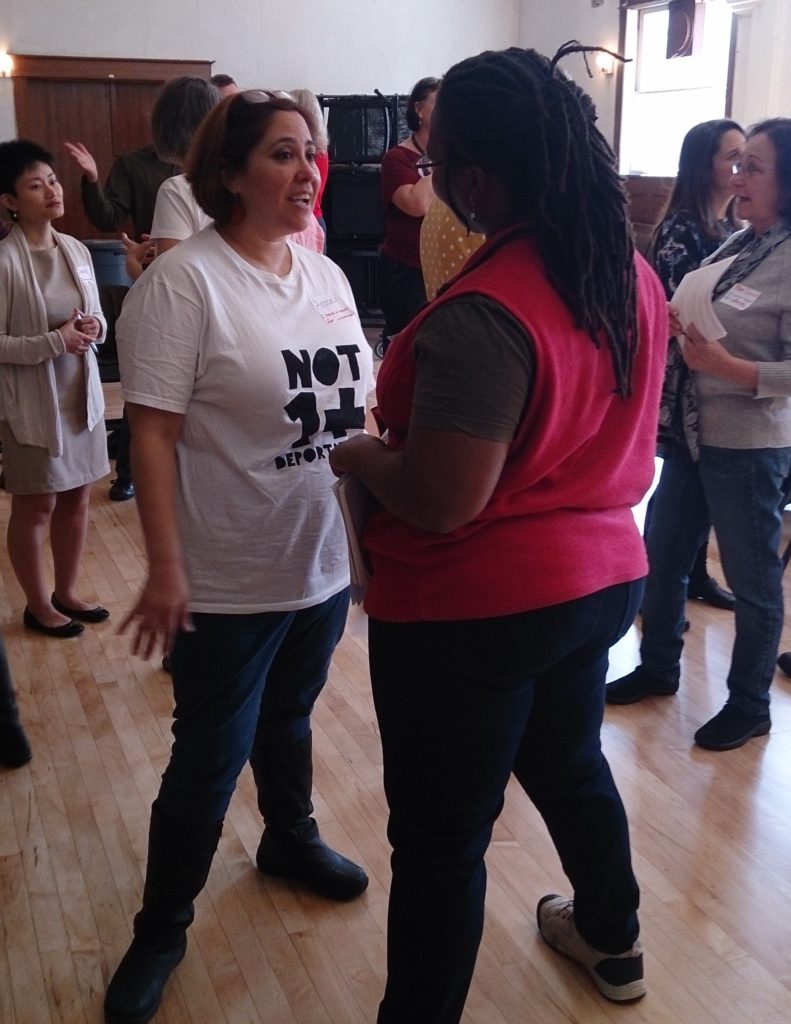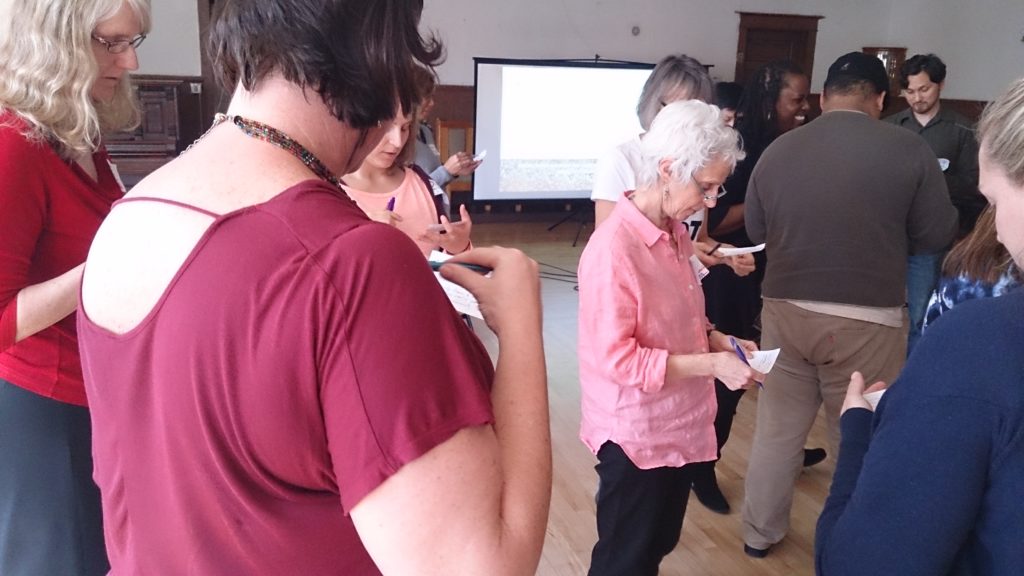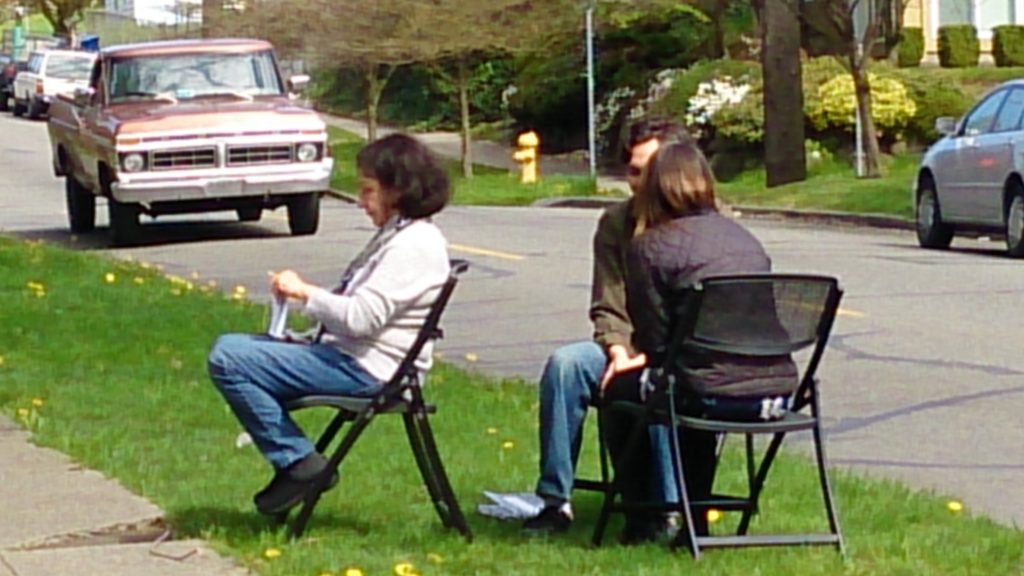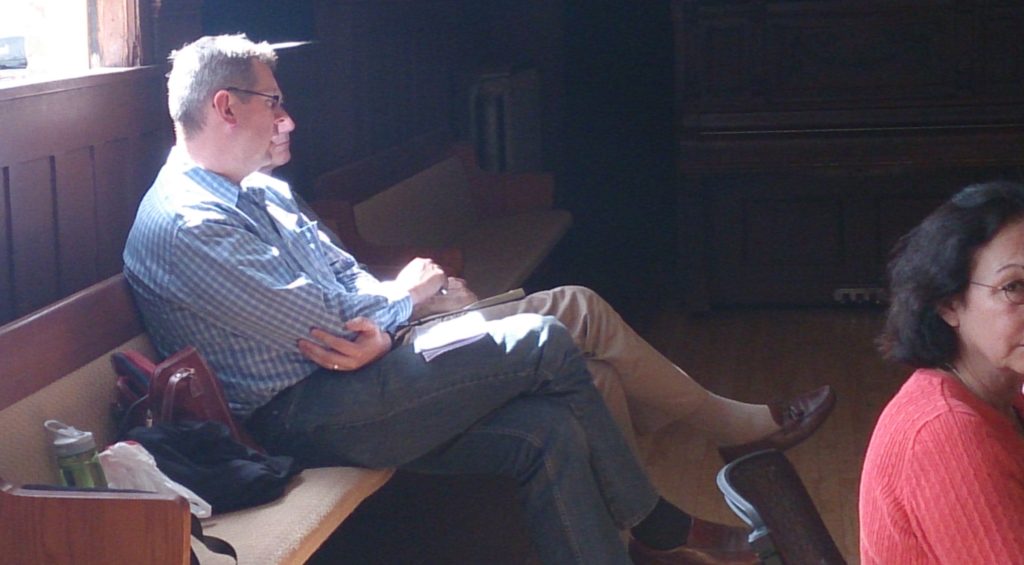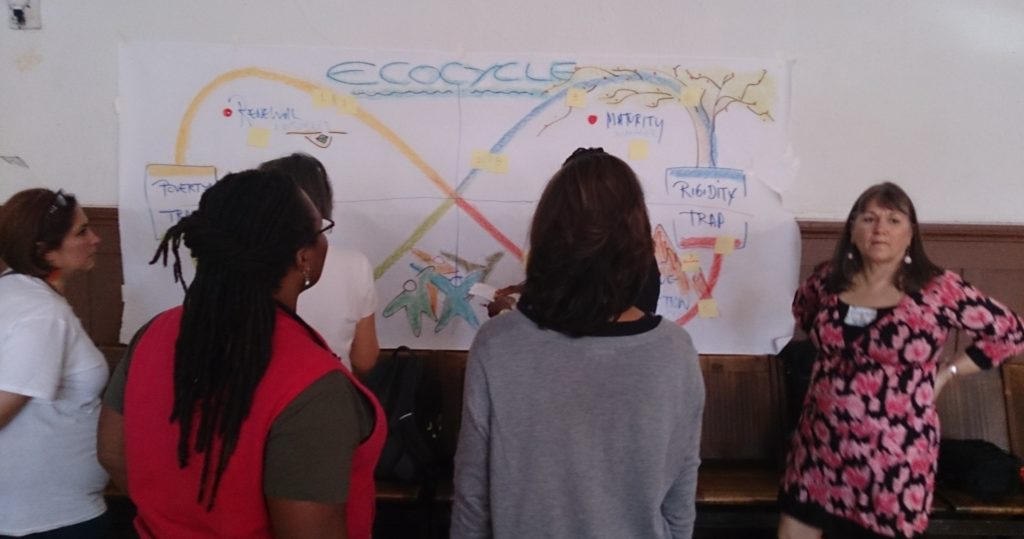Don’t make others fit into your view of the world

The tension in the room was palpable as people waited for the meeting to begin. Some perched on the edge of their seats silently staring ahead. Others fidgeted nervously. It was a first. More than 25 people from seven countries had gathered together in one room for this planning session, convened to determine the strategic direction and, ultimately, the fate of this team.
At first, the facilitators had the team’s full attention. They reviewed the agenda and did some cursory intros before diving into an exercise designed to build empathy by getting to know something about each team member. The facilitators’ intention was to focus on the interpersonal aspects of the team to warm things up by sharing their hobbies. While some people gamely stood up, others remained seated with facial expressions reflecting a combination of confusion, surprise, and anger.
People began to vent their displeasure openly, with comments like:: “What the…..????” “What a complete waste of time!” “What if someone thinks my hobby is silly?” “That is none of anyone’s business what I do outside of work!”
The facilitators were caught off-guard. After all, this exercise worked well before with teams from high-tech organizations in the greater Boston and NYC areas. Luckily, they had a Plan B that went better, but they struggled to earn the trust of the group for the rest of the meeting. What went wrong? What were their blind spots and biases in the design and delivery of the meeting?
In this post, which I had the pleasure to co-write with Nancy Settle-Murphy of Guided Insights, we reflect on ways that empathy as we understand it, can actually work against us as facilitators or team leaders, and the importance of checking our biases and assumptions at every step. We were stimulated to think and write together after reading Kaitlyn Greenidge’s recent essay in the New York Times (“The Bearable Whiteness of Little Women”) which reminded us of our white privilege and prompted us to think about shifts we need to make in our own facilitation practices.
Nancy White: I had always thought of “being empathetic” and “walking in someone else’s shoes” as a useful thing, something I valued. But this masked my unconscious privilege as a white person by not realizing if I am not careful, every choice I make in designing group process comes “from my shoes.” I’m asking others to participate through my worldview. I started writing a few thoughts and Nancy Settle-Murphy chimed in.
Nancy Settle-Murphy: Ironically, even though I lead unconscious bias workshops, I hadn’t really considered the extent to which my own biases affect the design of my programs. I’d always hoped that if everyone would just “trust the process,” everything would be fine. That’s because I was looking at the program through my own eyes, rather than imagining how it might feel to others.
Together, we brainstormed some things for us to practice, as facilitators, trainers or team leaders, to work more from compassion than empathy, starting with our understanding of the difference between the two.
- Distinguish between empathy and compassion. In a Vox.com article, The Case Against Empathy, author Sean Illing quotes author Paul Bloom: “By empathy, I mean feeling the feelings of other people. So if you’re in pain and I feel your pain — I am feeling empathy toward you. If you’re being anxious, I pick up your anxiety. If you’re sad and I pick up your sadness, I’m being empathetic. And that’s different from compassion. Compassion means I give your concern weight, I value it. I care about you, but I don’t necessarily pick up your feelings.” Empathy can be draining, while compassion can be invigorating.
- Don’t make others fit into your view of the world. In her New York Times essay, Greenidge laments the preponderance of white characters in American literature. “When we as black girls read most books, we have to will ourselves into the bodies on the page…and do an internal edit that white readers of the same canon do not necessarily have to exercise.” It’s true that reading fiction can be an exercise in empathy, she says, but, she asks: “Is empathy really empathy if it’s flowing in only one direction? If so, empathy looks less like identifying with the other and more like emotional hegemony.” Indeed.
- We may think we’re empathizing when we’re really not. We see others through the prism of our own experiences, thoughts and feelings. It’s pretty much impossible not to. But as facilitators (or leaders), we like to think we’re especially empathic people. In reality, our empathy often typically extends only to those people we see as similar or pleasing to us. Says Bloom: “I actually feel a lot less empathy for people who aren’t in my culture, who don’t share my skin color, and don’t share my language. This is a terrible fact of human nature, and it operates at a subconscious level.” The key is to challenge ourselves constantly at critical junctures – when we’re designing our meetings, creating activities, asking questions, or making interventions.
- Misguided empathy can sometimes be worse than none. We may think we’re being sensitive when we take into account the differences among certain people or groups (e.g. Mindy the Millennial, Bob the Boomer, Asra the Engineer). In reality, making quick stereotypes can lead to flawed assumptions that become the basis for the design of training programs, team assignments, professional development plans and so much more.
- Design with instead of for. We can view our designs, methodologies, approaches, etc. from other perspectives, either by engaging stakeholders in design, asking others, or by prototyping how others might see this, based on what we’ve learned about their culture. What about our approach might be uncomfortable or off-putting? Which approaches might transcend differences? Or better yet, leverage the power of those differences?
- Become more aware of our unconscious biases. For starters, we can take one or two Implicit Association Tests (free online). Be open and curious about what we’ve learned Discuss our results with people we trust. Don’t judge ourselves harshly if our results show that we have a strong preference for a particular culture, religion, gender, body type, etc.
- Learn more about other cultures, ethnicities, races, religions, demographics, etc. – especially those represented by the people we work with, or those we will support. Read books by authors from those groups, seek articles and books written by anthropologists, sociologists, psychologists, and especially those with lived experience.
- Seek feedback from people who can observe us in action (whether in person or virtually). It is often hard to see our own blind spots. Ask colleagues or those whose opinions you trust to critically (not judgmentally) observe your actions, words, nuances expressions, etc. in calls, meetings and in informal settings. Especially ask for help from people outside of your usual “crowd” or colleague group. But be wary of asking “representative” members of certain groups to do your work for you. It’s a fine line.
- Wield your power thoughtfully. The greater the power we have over others, the less likely we are to feel empathy toward them. In an experiment by the Max Planck Institute, researchers concluded that when you are in an “agreeable and comfortable” situation it is more difficult to empathize with another person’s suffering. Participants who were feeling good about themselves assessed their partners’ negative experiences as less severe than they actually were. This has profound implications for both facilitators and leaders, who have a hard time relating and responding to concerns of those they consider to be “lesser than,” whether due to hierarchy, place of origin, ethnicity, level of education, or other factors.
- Always have a Plan B instead of “Trust Me.” Despite our best intentions and most thoughtful planning, our approach may misfire. If we sense resistance, rather than debating the merits of our idea and asking people to just “trust the process,” we are prepared to change the process. Be curious about why our approach wasn’t working, either in the moment or afterwards. We really can learn a lot from our mistakes.
- From empathy to compassion. This is probably the hardest to put into specific action steps. We think it starts with self-awareness (the facilitator’s best friend). It may be like the distinction between enabling and empowering by Nedra Tawwab. We start with what others ask for, not what we think they need, even if they haven’t fully arrived at clarity of their needs. This is a delicate, emergent space. But it is the right space for us to focus attention. If we stop pretending, or worse, believe we accurately “feel” what others feel, and instead ask, listen and respond based on that data, we’ll be setting off in the right direction. As they say, this is a compass, not a map.
Summary from Two Nancys
We are not omniscient. Assuming the stance of empathy does not make us understand others automatically, and may in fact get in the way of being compassionate. As facilitators and leaders, we must be critically self-aware of our privilege, power and shortcomings. We must design group process to engage everyone in ways that work for them, not designed to make our jobs familiar, comfortable, or even easy for us. For if it were easy, then who needs someone to support the group process? If we were all skilled at including and unleashing the diversity in each room we enter together, many of our problems would be on their way to solutions. So now is the time to improve our own self-awareness and practices.
What tips can you share? Please comment below and/or send to nancy@guidedinsights.com. Nancy Settle-Murphy will share in a future issue of her newsletter, with your permission. Comments here will just be here!
Links
- Discovering Unconscious Bias Workshops – customized onsite workshops from Guided Insights – also can be delivered virtually
- Resource list from our Discovering Unconscious Bias workshops– downloadable PDF with articles, videos, books, and more
- Empathy Flowing in Many Directions – blog post by Nancy White
- The Case Against Empathy – article in Vox.com
- The Bearable Whiteness of Little Women – essay in New York Times
- The Neuroscience of Empathy– article in Psychology Today
- Expanding Awareness: How Patterns of Interaction Support White Supremacy – article in Arrow
- From Empathy to Compassion in a Neuroscience Laboratory – article by Matthiu Ricard The Empathy Edge – book by Marias Ross
- Against Empathy – The Case for Rational Compassion – book by Paul Bloom
- The Person you Mean to Be, book by Dolly Chugh
- The Culture Map, book by Erin Meyer
- Empathy is the Key do Deception by Christian Hart
